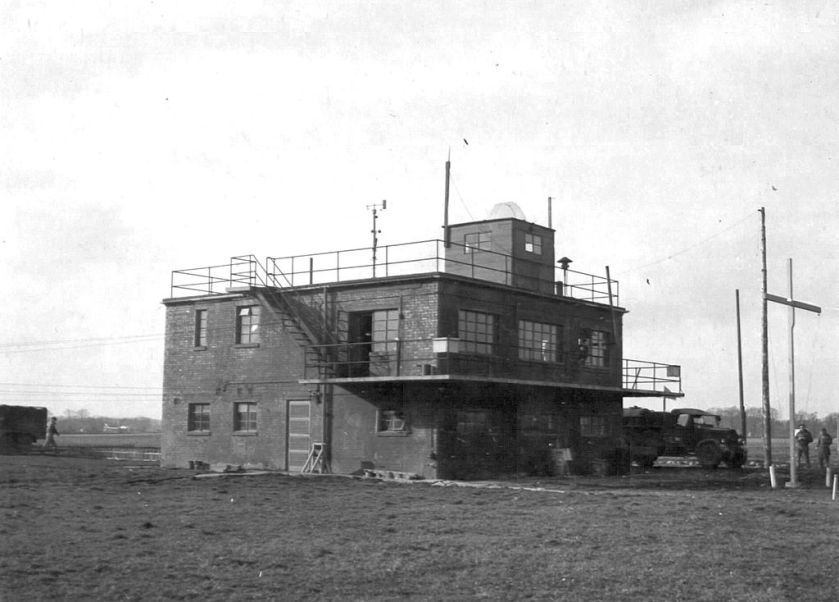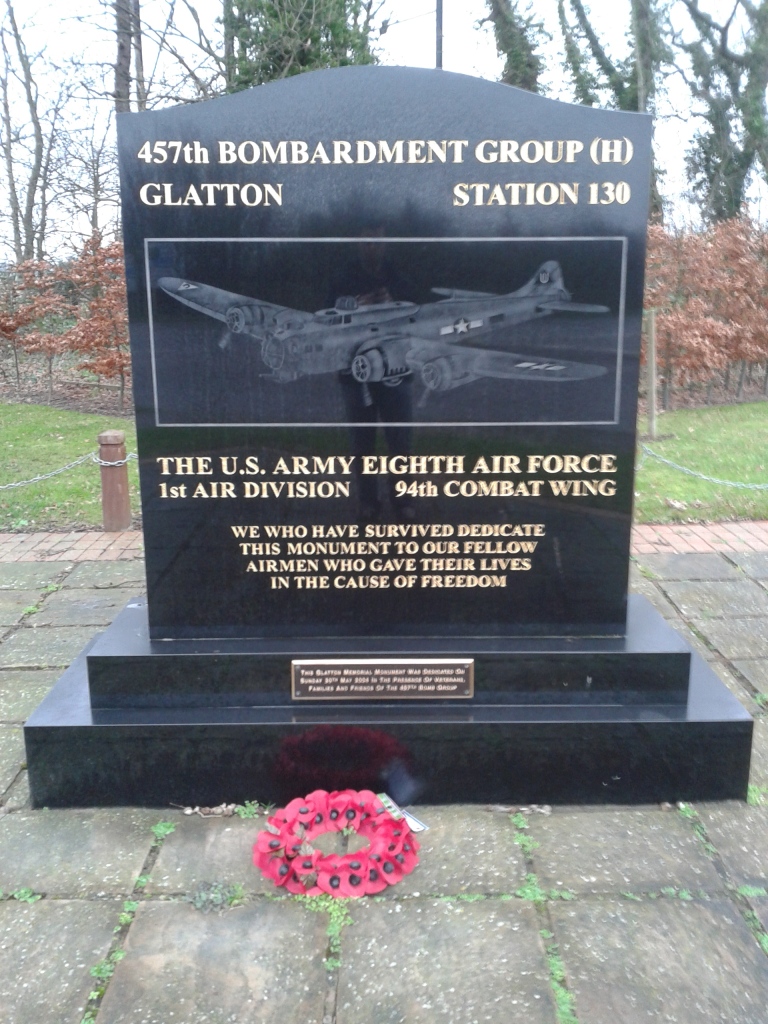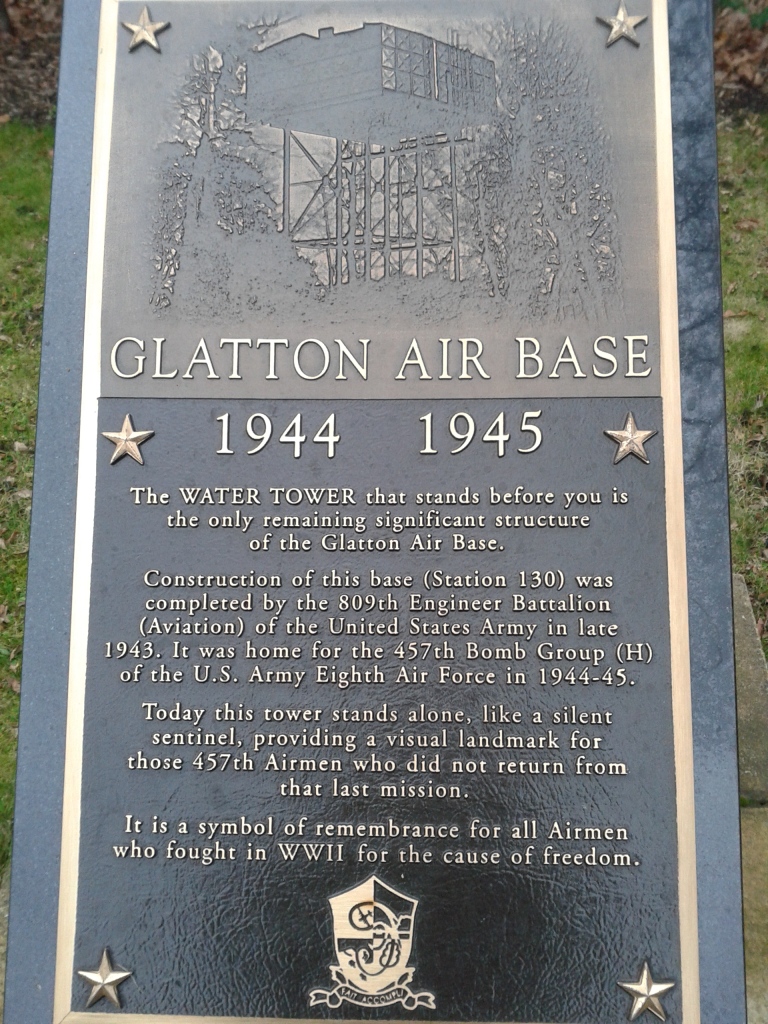Between Huntingdon and Peterborough, in the west of Cambridgeshire lies the small village of Conington. With its beautiful All Saints Church, first mentioned in Domesday Book and rebuilt in the early 16th Century, and remarkably beautiful cottages and homes perched on the edge of the fens, one can hardly imagine that 70 years ago this was the home of four squadrons of B-17 Flying Fortresses, roaring into the air almost daily for targets in Germany and Occupied Europe.

In the Second World War, Conington was located next to Royal Air Force Station Glatton, which was constructed to Class “A” standards by engineers to support heavy bombers in 1943 with the intent of being used by the U.S. Army Air Forces in the strategic bombing campaign. The 457th Bombardment Group (Heavy) arrived on 21 January 1944, consisting of the 748th, 749th, 750th and 751st Bombardment Squadrons. The recognizable tail code of the 457th was the “triangle U” painted on the vertical stabilizers of the Boeing B-17 Flying Fortresses which operated from the air base. The 457th Bomb Group operated RAF Glatton from January 1944 until 20 April 1945, when it completed its 237th and last combat mission at the conclusion of the war.
Before June 1944, the 457th operated on attacking strategic targets in Germany – munitions factories, ball-bearing plants, marshalling yards and oil refineries. On D-Day, the 457th flew missions against Cherbourg Peninsula, attacking German positions off the east flank of American forces landing at Utah and Omaha beaches. By July 1944, the 457th had resumed strategic bombing and would continue to focus on German targets through April 1945. However, the 457th provided aerial bombing support to the breakout from St. Lo in northern France, the British 1st Airborne’s landings at Arnhem in the Netherlands, and in support of embattled U.S. Army forces in the Battle of the Bulge.
At the conclusion of the War, the B-17s of the 457th Bomb Group returned to the United States and the airfield was used by No. 3 Group of the RAF Bomber Command flying B-24 Liberators and Avro Lancaster heavy bombers. By 1948, it was decided that the airfield was surplus and the land was returned to agricultural use and demilitarized.



Today, one of the Class A runways remains in use as the “Peterborough Business Airport” which is a general aviation facility. It is a testament to the strength of the runways built over 70 years ago that the field remains in limited and lighter use. The only other structure from the Second World War is the water tower which stands near the 457th Bomb Group Memorial, off Great Ermine Street, near the village. In All Saints’ Church, Conington, is a memorial to the 457th Bomb Group which must be visited.

To see RAF Glatton, travel up the A1(M) and exit at the B660, signposted to Conington.


Are there air shows at this site.
LikeLike
Sadly no, the airfield is currently only used for general aviation (think privately owned aeroplanes for recreational use). The Connington Flying Club operates out of the former RAF station, their webpage is: http://www.flying-club-conington.co.uk/, where more information on the current use of the aerodrome can be found.
LikeLike
The water tower is for sale.
LikeLiked by 1 person
What’s up, I read your new stuff named “RAF Glatton and the 457th Bomb Group (Heavy) | Cambridge Military History” daily.Your writing style is witty, keep it up!
LikeLike
My father Arnold C. McQuaide was a Army Air Force mechanic early in the operation of the 457th Bomb Group at Peterboro. Early in WWII, my Dad was stationed at Atlantic City, NJ, where he and my mother met and married. At the time I was born during WWII, he was stationed at “Peterboro” (as Dad always referred to Glatton). Later, when I was in elementary school, he told me chilling stories about what he experienced there – stories of cleaning and repairing shot-up B-17s in which crewmen had been wounded or killed during bombing runs and participating in test flights of repaired B-17s before they could be returned to service for new bombing runs. I think Dad carried memories of those experiences throughout his life. He also told of visiting distant cousins during his time at Peterboro. (My paternal grandmother, a native of England, was born in Yorkshire and had emigrated to the US with her family as a young child.) Late in Dad’s life, he had hoped to participate in a 457th reunion stateside, but unfortunately ill health prevented him from doing so.
LikeLike
My Dad was stationed at Glatton . 748th Squadron .
LikeLike
Do you know who currently owns the water tower near the old RAF Glatton field?
LikeLike
Richard, I believe it belongs to the local farm located along the B road near the A1(M); the property adjacent to the tower.
LikeLike
My Dad, Leonard Lewandowski was stationed here between December 1944 and May 1945. My wife and I had the opportunity to visit the field and the church nearby in August of 1994. Quite a day
LikeLike
Lee, I’m very glad you were able to visit where your father served. Thanks for the comment and all the best to you and your family.
LikeLike